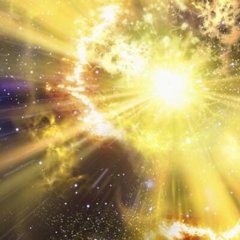-
Content count
1,610 -
Joined
-
Last visited
-
Days Won
36
About stirling
-
Rank
Dao Bum
Profile Information
-
Gender
Sunyata
Recent Profile Visitors
8,952 profile views
-
Ah.... not so concerned with my teachings so much as actual experience in this moment. I had the pleasure of living in London for a while and getting to go to the Theosophical Society for lectures and other things, as well as Sogyal Rinpoche's Rigpa organization. Definitely the Theosophists borrowed from myriad sources. I actually LOVED their whole gestalt, but didn't end up working in that system much... it felt like a kludge to me. Thanks for bringing them up.
-
… and he speaks with great clarity about something he is intimately familiar with, that just happens to be true. 🙂
-
I just love that chap.
-
I wouldn't accuse your friend of lying. He might have had an experience of that which he remembers vividly. I can remember my 18th birthday party, but it is ONLY a memory, not something I can see or experience now. This is the problem. As much as I love the idea, an Akashic records vault full of stories about he past and future violates everything that insight into emptiness/dao/Buddha nature clearly demonstrates about reality in this moment. Speaking solely for myself, I would only believe it if I saw it but it would have to violate everything I know about the ultimate qualities of reality, AND it would have to be something that was always available in this moment. It is instructive, by way of an example, to look at what some enlightened teachers say about their ultimate conclusions on past lives. This example comes most easily to mind, but my teacher and others I have chatted to about this topic say essentially the same thing: Experiences of past lives DO happen - but that doesn't mean they have any deeper reality than something you dream, or even something you did yesterday. Can you see your past life, or experience of the Akashic records in this moment? This is what matters. This is the litmus test for what is "real". Anything you are not experiencing in this this moment, where you are, is a story you are telling yourself. This is obvious where there is non-dual/unity understanding. Insight into the non-dual nature of reality is omnipresent - part of this moment of experiencing forever.
-

Where can I find an expert to help me? I badly need it.
stirling replied to mishen911's topic in General Discussion
Nungali is right, this is a psychological problem, NOT a spiritual attainment of any kind. What you are saying does not go with any spiritual tradition any of us have heard of and there is a LOT of expertise here. There is no better idea about what to do, or better option than to seek medical and psychological aid. Please seek help. I am locking this thread. -

Making sense: How to combine emptiness and compassion?
stirling replied to TranquilTurmoil's topic in Buddhist Discussion
Interesting to see this thread necro'd! As it turns out there is no need to combine emptiness and compassion, they are in fact inseparable. Where there is emptiness there is always compassion, though sometimes it takes a practice to open that compassion up. -

moving our point of consciousness; and the universe as a thought we are thinking
stirling replied to BigSkyDiamond's topic in General Discussion
Yes, Dogen IS saying something, absolutely. He is saying: "When you actualize your practice it happens here... NOW." Realization of enlightenment doesn't happen in the past or future, it happens when you drop all of your doing and find sudden presence in this moment by sitting". Awaken, and actualize the practice NOW. The dream of watching the world is the same as the dream of becoming engrossed watching television. The moment you become engaged in the story of what you watch you are lost. There is watching phenomena arise and pass, impermanent, not being caught up in the story of the mind. There is simple presence, and the emptiness of self/time/space. This happens all the time... it is just waiting for you to notice. Take a deep breath and let it out from your mouth slowly as you read this sentence. Maybe it is happening now as you read these words? -

moving our point of consciousness; and the universe as a thought we are thinking
stirling replied to BigSkyDiamond's topic in General Discussion
Yes. Good. I like "awareneness" or "beingness" as descriptors. What he means here is that one can take observation of what this all is and reduce it, and reduce it again until one arrives at a final simple conclusion - there is just awareness shining back. This is too complicated, IMHO. It's all really simple. No places, relationships, activities, or placement. This moment just is, and there is a simple awareness of that which belongs to no-one and no-thing - pervades the field of phenomena. Arriving at this simple understanding is hard for us humans, especially those of us with the burden of education. It took me years to realized what a handicap it was for me. Practice is just being, without contrived concepts about how to go about it. You can find practices with massive to-do lists, but they all eventually point to this simple being. The Zen you got mixed up in so long ago is all about this simple "being" right from the start... the Theravada that interests you much less so, though they point at the same understanding. -
Your answer implies success. I'm sure you found it. The "nada" sound is very similar to tinnitus too - I find them complementary.
-

moving our point of consciousness; and the universe as a thought we are thinking
stirling replied to BigSkyDiamond's topic in General Discussion
it’s an excellent question to examine carefully. It is in fact everywhere in the field experience, and nowhere at all. You aren’t really doing Shikantaza until this is something that you can see properly. This is why Shikantaza is not different from enlightened mind. Everything is Mind. You are liberating all phenomena in the moment that labeling them stops. -

are spiritual masters involved in politics
stirling replied to old3bob's topic in General Discussion
In Buddhism at least there are two classes of enlightenment: That which you might encounter in a living being, and that of those that have extinguished the karma of birth and death (those that are "dead"). https://en.wikipedia.org/wiki/Nirvana_(Buddhism)#Nirvana_with_and_without_remainder_of_fuel -
Probably. Still.
-
I wouldn't voluntarily submit to an assisted process labelled "dying" without a clear idea of what that means in context. When you have more information about the process or intent, please share here what that might entail.










